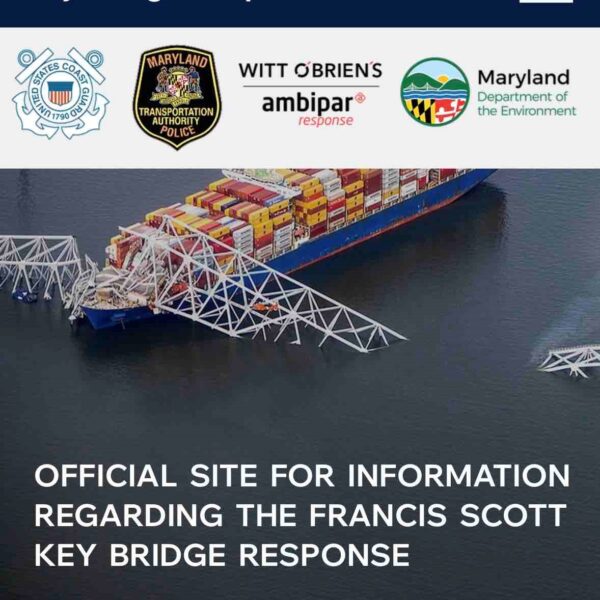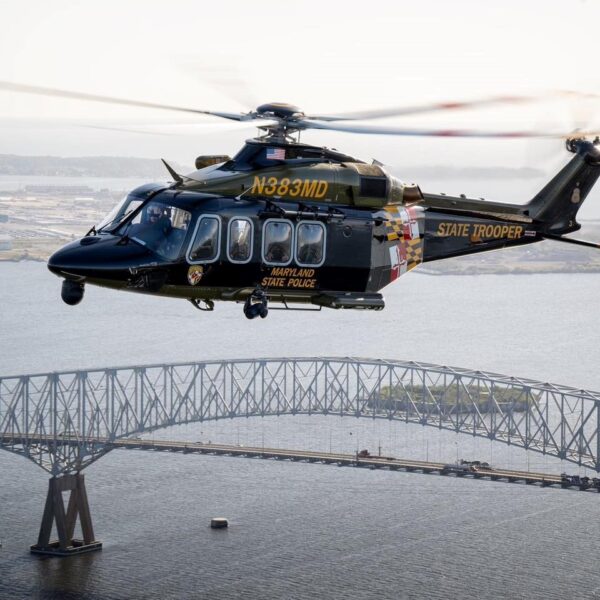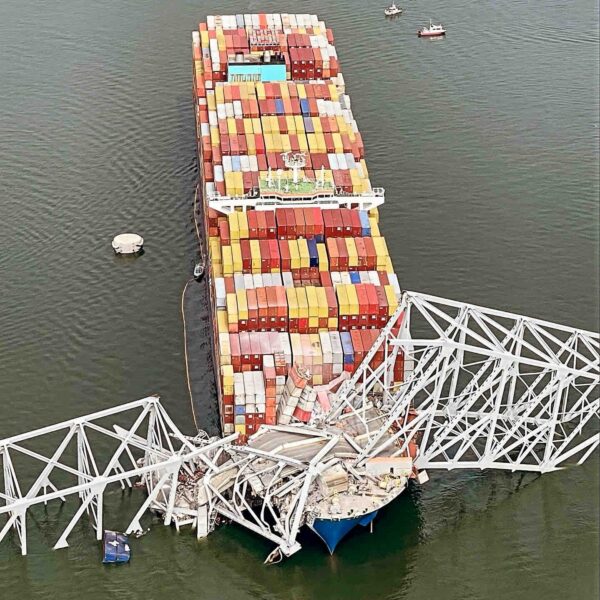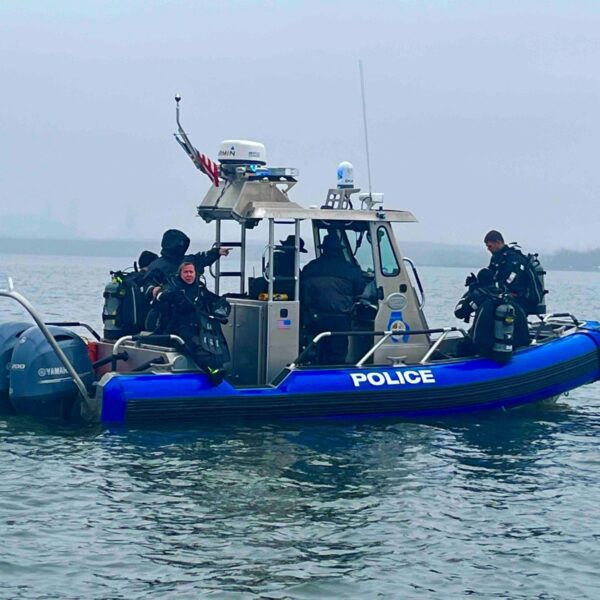
By now, just about everyone is aware of a massively loaded cargo ship Dali slamming into the Francis Scott Key Bridge on March 26, 2024, at 01:39 a.m., collapsing the hulking expanse and sending cars into the water below, eliciting gobs of uniformed personnel to the land/sea scene.
As can be imagined, search-and-rescue and investigative efforts entail a wide array of public safety assets of various organizations involving local, county, state, and federal agencies.
The common responders in such a gargantuan tragedy involving major modes of transportation are the National Transportation Safety Board (NTSB) personnel whose “investigators” are not sworn law enforcement officers—they are civilians who coordinate fact-finding efforts among entities possessing bona fide arrest powers should evidence indicate criminal wrongdoing (such as the bandied about cyberattack causing this maelstrom).
All NTSB personnel will be working closely with various factions among the law enforcement mosaic, including the FBI’s Evidence Recovery Team.
Taking point as a sort of ringleader over multiple agencies, the NTSB Chair Jennifer Homendy has been busy pooling information and providing updates for public release, highlighting “764 tons of hazardous materials” were contained in some of the 4,000 metal cargo boxes on board the ship.
Given such a surreal catastrophe, “The Maryland State Police – Aviation Command deployed multiple aircraft in the initial response to the Key Bridge collapse and will continue to commit assets, personnel, and expertise in coordination with our local, state, and federal partners. It is in moments like these that Maryland’s integrated emergency response system shines. Our thoughts are with those directly impacted and the many emergency responders involved.”
The enormity of the Key Bridge (Interstate-695) incident engenders many government factions getting to the bottom (literally and figuratively) of the ordeal. Thus, a conglomerate of first responders and other related personnel from various organizations pool findings and, when appropriate, publicize findings as they go…

(Photo courtesy of the Baltimore County Police Department.)
In the context of public safety assets requiring airspace, the Maryland State Police imposed a “No Drone Zone” to decongest air traffic and allow uninterrupted investigative efforts and mapping to transpire unimpeded by enthusiasts.

(Photo courtesy of the Maryland State Police—Aviation Command.)
Given body recovery operations conducted by several law enforcement agencies, dignity is a component of the prohibitions of hobbyist drone flyers.
Baltimore has both a city police department and a county police department. Just as these local law enforcement agencies ordinarily share jurisdiction of the waterways banking the metropolis, each has assets involved in the consortium of cops dissecting one of the world’s largest puzzles caused by the Singapore-flagged Dali ship stacked to the brim with cargo.
The Baltimore County PD posted a statement regarding this unimaginable horror show, especially embracing police divers down under the mess, seeking the deceased:
“The Baltimore County Police Department would like to thank and recognize the members of the BCoPD Dive Team who have worked under extremely difficult conditions with our regional & federal partners to recover the bodies of two workers who were on the Key Bridge when it collapsed.”

(Photo courtesy of the Baltimore County Police Department.)
Public Safety Dive Teams
While cops maintained the safety of the horrid scene on landmass sides formerly linking the bridge’s span, waterborne operations engender highly trained certified police divers to submerge in the port’s channel to initially salvage potential survivors and subsequently morph into recovery mode.
A diving expert stated that the Port of Baltimore water was 8 degrees at the time and that expectations for anyone submerged in the water had scant time to survive.

(Photo courtesy of the Baltimore County Police Department.)
Inclement weather hampered the divers’ diligence, thus compelling police executives to consider officer safety by suspending submersion until conditions improved. As in any police activity, cops must arrive alive to be effective.
As you read this material, cranes on barges arrived, destined to remove the wreckage…
The removal process on an unstable surface (water) adds hazardous potential, requiring police marine patrol boats to stage in a perimeter, allowing an unimpeded field of operations—there’ll always be at least one civilian boater whose craving for up-close footage will taunt authorities who have distributed PSAs to steer clear of the debacle.
Transportation Authority Police
Metropolises like Baltimore typically have assemblies of law enforcement officers employed by the jurisdiction’s transportation authority. In this monstrous case, reports of police officers received alerts of the errant ship roughly 90 seconds before impact, saving motorists from crossing the bridge from either side.
The Key Bridge is among the various jurisdictional domains covered by officers with the Maryland Transportation Authority Police Department, which is “nationally accredited and is the eighth largest law enforcement agency in the State of Maryland with more than 500 sworn and civilian professionals. The MDTA Police are responsible for law enforcement at the MDTA’s bridge and tunnel thruways, highways, the Baltimore Washington International/Thurgood Marshall Airport, and the Port of Baltimore.”
Transportation authority police departments ordinarily position at least one officer at each end of a bridge or tunnel, in addition to their other more vast venues such as airports and seaports, all of which routinely have heavy volumes of people traversing through, requiring oversight security at the ready, providing safety and security measures.
Sounds like scant seconds before the Dali impacted the Key Bridge, police officers rang all the bells and summoned all resources amounting to a multi-level response from a potpourri of first responders. Having served as one early in my police career, MDTA public safety dispatchers were immediately thrust into the call of their career when one of their sworn officers spoke surreal words: “The whole bridge just fell down! Start…start whoever, everybody! The whole bridge just collapsed!”
Right after that, another officer clarifies “I can’t get to the other side…the bridge…is…down!”
Thought clouds likely filled with Nah, couldn’t be. The stark reality, however, materialized for all first responders activated the harbor horror. Disbelief likely played across many minds, right before training, courage, and dedication to duty took over.
We conclude with a relatively 9/11 equivalent of public safety professionals forging forward in the ugly face of horrific circumstances and pulling out all stops to salvage against further loss of life.
From a bank of media mics, Maryland Governor Wes Moore praised police officers, saying, “Literally by being able to stop cars from coming over the bridge, these people are heroes. They saved lives last night.” In one of several on-air interviews with NTSB Chair Jennifer Homendy iterated a 12-24 month span of time before a “final report” is compiled.
If you wish to follow the revelations from this multi-agency investigation, the Unified Command headed by the United States Coast Guard launched the website “Key Bridge Response 2024” which is accessible for information flow.
First responders confronting this unthinkable event…hats off to you all!